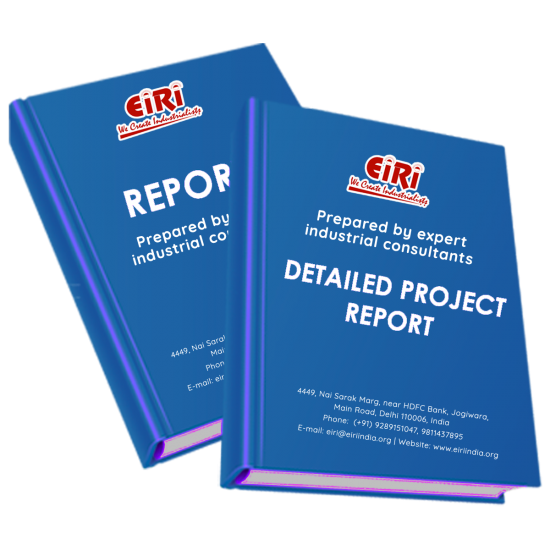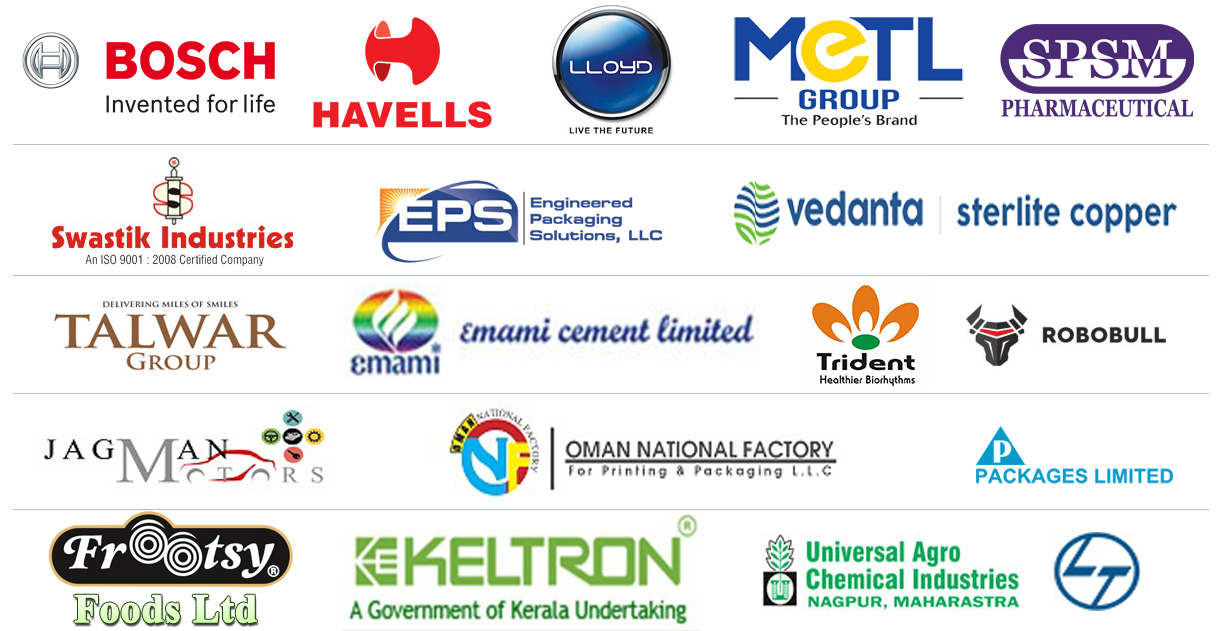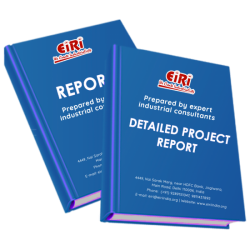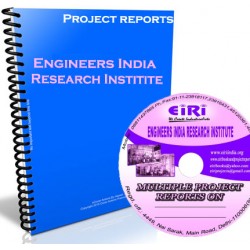Detailed Project Report on hard anodizing industry with cookwares and kitchenwares

- More than 40 years of experience
- Managed by expert industrial consultants
- ISO 9001-2015 Certified
- Registered under MSME, UAM No: DL01E0012000
- 24/5 Research Support
Get your quesries resolved from an industry expert. Ask your queries before report or book purchase. - Custom Research Service
Speak to the our consultant to design an exclusive study to serve your research needs. - Quality Assurance
All reports are prepared by highly qualified consultants & verified by a panel of experts. - Information Security
Your personal & confidential information is safe & secure.
HARD ANODIZING INDUSTRY WITH COOKWARES AND KITCHENWARES
[CODE NO.3121 ]
Anodizing is an electrolytic passivation process used to increase the thickness of the natural oxide layer on the surface of metal parts. The process is called
anodizing because the part to be treated forms the anode electrode of an electrical circuit.
Anodizing increases corrosion resistance and wear resistance, and provides better adhesion for paint primers and glues than bare metal. Anodic films can also be used for a number of cosmetic effects, either with thick porous coatings that can absorb dyes or with thin transparent coatings that add interference effects to reflected light. Anodizing is also used to prevent galling of threaded components and to make dielectric films for electrolytic capacitors. Anodic films are most commonly applied to protect aluminium alloys, although processes also exist for titanium, zinc, magnesium, niobium, and tantalum. This process is not a useful treatment for iron or carbon steel because these metals exfoliate when oxidised; i.e. the iron oxide (also known as rust) flakes off, constantly exposing the underlying metal to corrosion.
Anodising changes the microscopic texture of the surface and changes the crystalstructure of the metal near the surface. Thick coatings are normally porous, so a sealing process is often needed to achieve corrosion resistance. Anodised aluminium surfaces, for example, are harder than aluminium but have low to moderate wear resistance that can be improved with increasing thickness or by applying suitable sealing substances. Anodic films are generally much stronger and more adherent than most types of paint and metal plating, but also more brittle. This makes them less likely to crack and peel from aging and wear, but more susceptible to cracking from thermal stress.
Preceding the anodizing process, wrought alloys are cleaned in either a hot soakcleaner or in a solvent bath and may be etched in sodium hydroxide (normally with added sodium gluconate), ammonium bifluoride or brightened in a mix of acids. Cast alloys are normally best just cleaned due to the presence of
intermetallic substances unless they are a high purity alloy such as LM0.
The anodised aluminium layer is grown by passing a direct current through an electrolytic solution, with the aluminium object serving as the anode (the positive electrode). The current releases hydrogen at the cathode (the negative build-up of aluminium oxide. Alternating current and pulsed current is also possible but rarely used. The voltage required by various solutions may range from 1 to 300 V DC, although most fall in the range of 15 to 21 V. Higher voltages are typically required for thicker coatings formed in sulphuric and organic acid. The anodising current varies with the area of aluminium being anodised, and typically ranges from 0.3 to 3 amperes of current per square decimetre (20 to 200 mA/in²).
Aluminium anodising is usually performed in an acid solution which slowly dissolves the aluminium oxide. The acid action is balanced with the oxidation rate to form a coating with nanopores, 10-150 nm in diameter. These pores are what allow the electrolyte solution and current to reach the aluminium substrate and continue growing the coating to greater thickness beyond what is produced by autopassivation. However, these same pores will later permit air or water to reach the substrate and initiate corrosion if not sealed. They are often filled with coloured dyes and/or corrosion inhibitors before sealing.
Because the dye is only superficial, the underlying oxide may continue to provide corrosion protection even if minor wear and scratches may break through the dyed layer.
The most widely used anodising specification, MIL-A-8625, defines three types of aluminium anodising. Type I is Chromic Acid Anodising, Type II is Sulphuric Acid Anodising and Type III is sulphuric acid hard coat anodizing
COST ESTIMATION
Plant Capacity : 10000.00 SQ.FT/day
Land & Building (2000 Sq.Mtr) : Rs. 5.44 Cr
Plant & Machinery : Rs. 3.38 Cr
Working Capital for 2 Month : Rs. 63.11 Lacs
Total Capital Investment : Rs. 9.78 Cr
Rate of Return : 31%
Break Even Point : 53%
INTRODUCTION
TYPES OF ANODISING
TYPE-I(CHROMIC ACID ANODISING)
SPECIFICATION
CONSIDERATIONS FOR HARD ANODISING
MATERIALS:
PROPERTIES:
GENERATE CLEAR CRYSTALLINE COATINGS
INCREASE OF SURFACE HARDNESS AND ABRASION RESISTANCE
INCREASE CORROSION RESISTANCE
BENEFITS
ADVANTAGES
USES AND APPLICATIONS
B.I.S SPECIFICATION
MARKET SURVEY
COMPETITIVE ADVANTAGES
CHALLENGES
FUTURE GROWTH OF KITCHENWARE PRODUCTS
OVERVIEW OF INDIAN KITCHENWARE INDUSTRY
OVERVIEW OF METAL FINISHING AND KITCHENWARE INDUSTRY (GLOBAL)
EXPORT DATA OF KITCHENWARE
EXPORT OF KITCHENWARE (%AGE)
EXPORT DESTINATION OF KITCHENWARE
PRESENT MANUFACTURERS AND SUPPLIERS OF KITCHENWARE & COOKWARE
SWOT ANALYSIS
PROCESS FLOW CHART
PROCESS OF HARD ANODISING
SURFACE PREPARATION
CHEMICAL CLEANING
THERE ARE TWO METHODS OF CHEMICAL ETCHING
ELECTROPOLISHING
CHEMICAL POLISHING
HARD ANODISING
RINSING
PLANT LAYOUT
SUPPLIERS OF RAW MATERIALS
HARD ANODIZING
CAUSTIC SODA
HYDROCHLORIC ACID
DEGREASING CHEMICALS
PACKING MATERIALS
SUPPLIERS OF PLANT AND MACHINERIES
HARD ANODISING PLANT
BENCH POLISHING MACHINE
EOT CRANES
DG SETS
POWER TRANSFORMERS
COOLING TOWER
AIR POLLUTION CONTROL EQUIPMENTS
AIR CONDITIONING EQUIPMENTS
AIR COMPRESSOR
PLATEFORM WEIGHING MACHINE
MATERIAL HANDLING EQUIPMENTS
FIRE FIGHTING EQUIPMENTS
SUBMERSIBLE WATER PUMP
APPENDIX – A:
1. COST OF PLANT ECONOMICS
2. LAND & BUILDING
3. PLANT AND MACHINERY
4. FIXED CAPITAL INVESTMENT
5. RAW MATERIAL
6. SALARY AND WAGES
7. UTILITIES AND OVERHEADS
8. TOTAL WORKING CAPITAL
9. COST OF PRODUCTION
10. PROFITABILITY ANALYSIS
11. BREAK EVEN POINT
12. RESOURCES OF FINANCE
13. INTEREST CHART
14. DEPRECIATION CHART
15. CASH FLOW STATEMENT
16. PROJECTED BALANCE SHEET
How to Make Project Report?
Detailed Project Report (DPR) includes Present Market Position and Expected Future Demand, Technology, Manufacturing Process, Investment Opportunity, Plant Economics and Project Financials. comprehensive analysis from industry covering detailed reporting and evaluates the position of the industry by providing insights to the SWOT analysis of the industry.
Each report include Plant Capacity, requirement of Land & Building, Plant & Machinery, Flow Sheet Diagram, Raw Materials detail with suppliers list, Total Capital Investment along with detailed calculation on Rate of Return, Break-Even Analysis and Profitability Analysis. The report also provides a birds eye view of the global industry with details on projected market size and then progresses to evaluate the industry in detail.
We can prepare detailed project report on any industry as per your requirement.
We can also modify the project capacity and project cost as per your requirement. If you are planning to start a business, contact us today.
Detailed Project Report (DPR) gives you access to decisive data such as:
- Market growth drivers
- Factors limiting market growth
- Current market trends
- Market structure
- Key highlights
Overview of key market forces propelling and restraining market growth:
- Up-to-date analyses of market trends and technological improvements
- Pin-point analyses of market competition dynamics to offer you a competitive edge major competitors
- An array of graphics, BEP analysis of major industry segments
- Detailed analyses of industry trends
- A well-defined technological growth with an impact-analysis
- A clear understanding of the competitive landscape and key product segments
Need Customized Project Report?
- Ask for FREE project related details with our consultant/industry expert.
- Share your specific research requirements for customized project report.
- Request for due diligence and consumer centric studies.
- Still haven't found what you're looking for? Speak to our Custom Research Team
About Engineers India Research Institute:
Note: We can also prepare project report on any subject based on your requirement and country. If you need, we can modify the project capacity and project cost based on your requirement.
Our Clients

Our Approach
- Our research reports comprehensively cover Indian markets (can be modified as per your country), present investigation, standpoint and gauge for a time of five years*.
- The market conjectures are produced on the premise of optional research and are cross-accepted through associations with the business players
- We use dependable wellsprings of data and databases. What's more, data from such sources is handled by us and incorporated into the report
Why buy EIRI reports?
- Our project reports include detailed analysis that help to get industry Present Market Position and Expected Future Demand.
- Offer real analysis driving variables for the business and most recent business sector patterns in the business
- This report comprehends the present status of the business by clarifying a complete SWOT examination and investigation of the interest supply circumstance
- Report gives investigation and top to bottom money related correlation of real players/competitors
- The report gives gauges of key parameters which foresees the business execution























